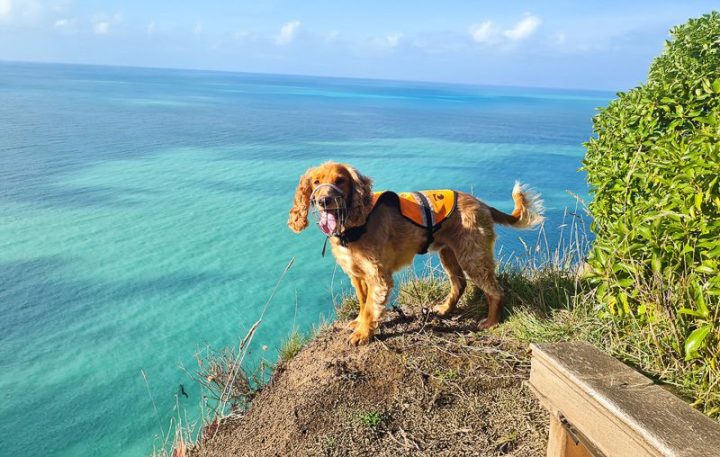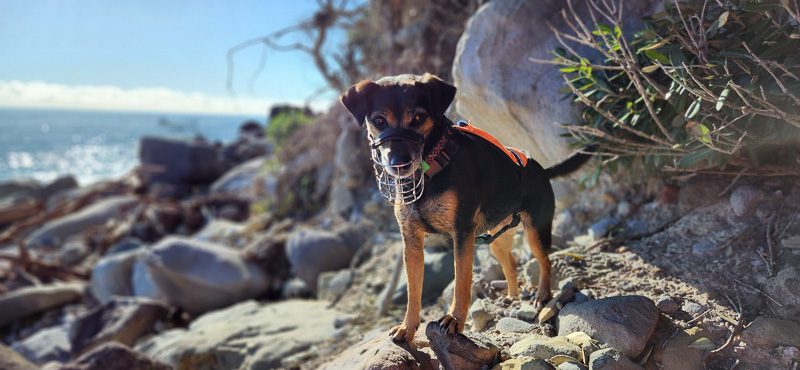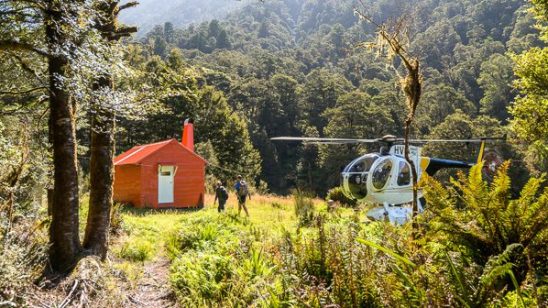
Canines in conservation
Detecting, monitoring and conserving – meet the canines protecting our native ecosystems.
Certified conservation dogs are some of New Zealand’s greatest guardians when it comes to preserving protected species and uncovering unwanted pests. More than 120 dog and handler teams work tirelessly nationwide to support conservation goals.
- Alongside their handlers, they:
Locate protected species to support conservation management - Undertake biosecurity checks at areas where vehicles leave for pest-free islands
- Assist in pest incursion responses to rapidly find and manage any pests
- Assist in pest incursion responses to rapidly find and remove any pests
- Educate people on New Zealand’s nature and the role trained dogs play.
Managed by the Department of Conservation (DOC) with Air New Zealand as the national partner, the Conservation Dogs Programme mentors, certifies, and supports a nationwide network of dog handler teams. Providing the ‘wings beneath this work’, Air New Zealand’s support enables DOC to run a “world-class programme” which includes flying certified conservation dogs to the precious places they help to enhance.

Around 18 months of training is required before a team can become certified for their target species – and training doesn’t stop with a certificate. Conservation dogs undergo regular training several times a week for as long as they continue working. Why? To maintain their ability to detect their target species and associated scents so our native ecosystems can flourish remain intact.
Between pest detection dogs and protected species detection dogs, these canines have conservation covered.
Pest detection dogs inspect boats departing for pest-free islands, provide surveillance of pest-free areas, and detect target pests and invasive weeds. Without their help, much of our native plants and animals would face devastation. Pest detection dogs are a vital component in New Zealand’s ‘predator free by 2050’ goal, through biosecurity and surveillance work which can detect pest incursions early
Protected species detection dogs assist in managing populations of protected species by locating them – such as kiwi – so DOC can monitor, translocate, and carry out necessary health checks. These highly-trained dog-handler teams are critical to the conservation of species including kiwi, whio, takahē and kākāpō.
Conservation Dogs travel the length and breadth of the country, including many of our off-shore Islands to protect and restore our nature. In Canterbury, Tahi (pictured left) has worked on Motunau Island and Stony Bay in Banks Peninsula.
Regular conservation surveillance takes place on predator-free islands in Fiordland, Pelorus and Queen Charlotte Sounds, plus Orokonui sanctuary in Dunedin, Brook Sanctuary in Nelson, and islands within Abel Tasman National Park.
Did you know?
New Zealand was the first country to use dogs for conservation efforts, pioneered by Richard Henry in the 1890s, with the programme now recognised as a world-leader in the safe and effective use of conservation dogs.




